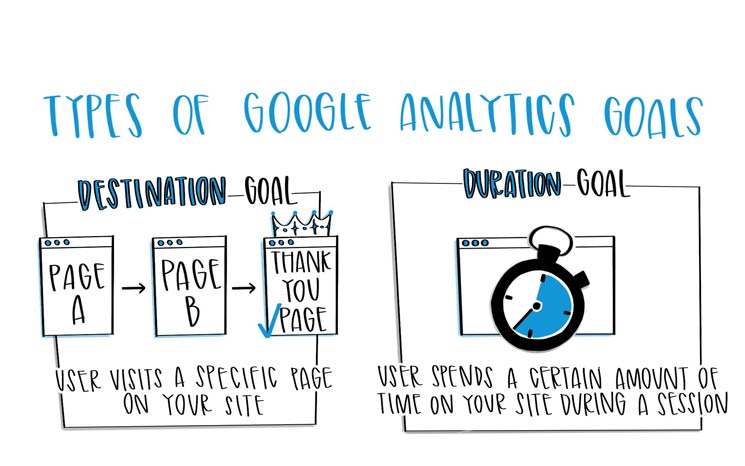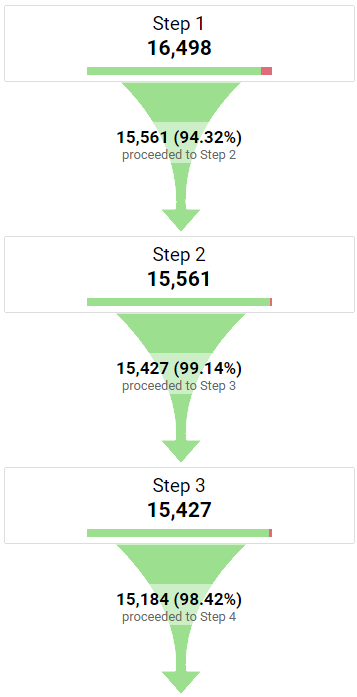Discover What Data Is Google Analytics Goals Unable to Track
Discover the Limitations of Google Analytics Goals: Revealing the Information Types That Remain Untrackable
As organizations increasingly rely on data-driven decision-making, comprehending the constraints of devices like Google Analytics comes to be vital. While Google Analytics Goals offer important understandings right into user interactions, there exist data types that avoid monitoring, posing challenges to a thorough understanding of customer actions.
Insufficient User Journey Tracking
Incomplete user trip monitoring within Google Analytics can prevent the capacity to properly analyze user behavior. When the user trip is not fully tracked, there are gaps in the data that avoid an extensive understanding of exactly how individuals interact with a website. This lack of understanding can bring about missed possibilities for optimization and improvements to the user experience.
One typical problem with incomplete user journey tracking is the failure to see the complete course that individuals take previously finishing a goal or leaving the website. Without this information, it is challenging to recognize where customers might be running into barriers or rubbing factors that prevent them from transforming. Furthermore, insufficient tracking can cover the effect of specific marketing initiatives or web site changes on customer actions.
To address this limitation, it is important to establish up appropriate monitoring systems within Google Analytics to capture the entire customer trip. This might include establishing up event tracking, objective funnels, or making use of tools like Google Tag Supervisor to guarantee that no essential communications go unrecorded. By obtaining an extensive view of the customer journey, site proprietors can make more enlightened decisions to enhance individual engagement and drive conversions.
Acknowledgment Challenges
Navigating via acknowledgment challenges in Google Analytics requires an extensive understanding of just how various touchpoints add to the general conversion process. Attribution challenges occur from the intricacy of modern client journeys, where users interact with several channels before transforming.
One usual acknowledgment obstacle is the difficulty in attributing conversions to the right source, specifically in cases where individuals interact with several channels prior to transforming. This can result in mistakes in figuring out which advertising and marketing initiatives are driving the most conversions. In addition, cross-device monitoring poses an additional attribution obstacle, as individuals usually switch over between gadgets during their trip, making it testing to track their communications perfectly. Marketing experts have to meticulously analyze and translate acknowledgment data to make enlightened decisions and optimize their marketing methods effectively.
Offline Conversions
Offered the difficulties linked with attributing conversions accurately in online channels, the measurement of offline conversions presents a significant opportunity for marketing professionals looking for a more comprehensive understanding of their consumers' journey. Offline conversions refer to activities that clients absorb the physical globe, such as making purchases in brick-and-mortar stores or over the phone, going to occasions, click site or involving with published materials - what data is google analytics goals unable to track. These conversions are important for organizations that operate both online and offline, as they offer useful insights into the efficiency of marketing campaigns throughout numerous touchpoints
Tracking offline conversions commonly presented a substantial difficulty for marketing professionals, as it was challenging to link these activities back to particular online interactions accurately. However, with innovations in technology, such as the integration of CRM systems, distinct identifiers, and promo code codes, businesses can now bridge the space between online and offline data to acquire a much more alternative view of customer behavior. By efficiently gauging offline conversions, marketing professionals can enhance their techniques, assign sources more efficiently, and eventually enhance the total consumer experience.
Cross-Device Monitoring
Cross-device monitoring plays a vital function in understanding the interconnected nature of customers' electronic interactions across multiple devices. In today's omnichannel globe, where individuals effortlessly switch over between mobile phones, tablets, and desktop computers, tracking their actions throughout these gadgets is important for marketers to obtain a detailed sight of their customer journey.

Furthermore, personal privacy problems and regulations such as GDPR and CCPA have better challenging cross-device monitoring. With individuals demanding more control over their information and boosted constraints on tracking modern technologies, online marketers should discover innovative and privacy-compliant methods to link customer interactions throughout devices.
Dynamic Material Engagement
Comprehending user involvement with vibrant web content is crucial in enhancing electronic advertising and marketing approaches for enhanced audience communication. Dynamic content refers to site elements that change based on customer habits, preferences, or other variables, providing a customized experience. Nonetheless, tracking individual interactions with dynamic web content poses obstacles for standard analytics tools like Google Analytics.
While Google Analytics can track fundamental communications like clicks and page sights, it may struggle to catch more nuanced involvements within dynamic web content. what data is google analytics goals unable to track. Metrics such as time spent on specific dynamic elements, hover activities, or communications within pop-ups are frequently not easily quantifiable making use of typical tracking approaches. This limitation prevents marketing experts' capability to totally understand her comment is here just how users websites are involving with dynamic material and customize their strategies as necessary

Final Thought
To conclude, Google Analytics goals have limitations in tracking incomplete individual trips, attributing conversions accurately, recording offline conversions, tracking cross-device communications, and gauging dynamic content involvement. These restraints highlight the significance of checking out added tracking methods and tools to get an extra thorough understanding of customer actions and conversions past what Google Analytics can give.
While Google Analytics Goals deal beneficial understandings right into customer communications, there exist information kinds that avoid tracking, positioning difficulties to a detailed understanding of individual habits.Incomplete customer trip monitoring within Google Analytics can impede the capacity to precisely evaluate user behavior. When the customer trip is not fully tracked, there are gaps in the data that avoid an extensive understanding of how customers communicate with a site.One common concern with insufficient individual journey monitoring is the failure to see the full course that individuals take previously finishing an objective or leaving the site. By gaining a thorough view of the user trip, site proprietors can make more informed choices to enhance customer involvement and drive conversions.